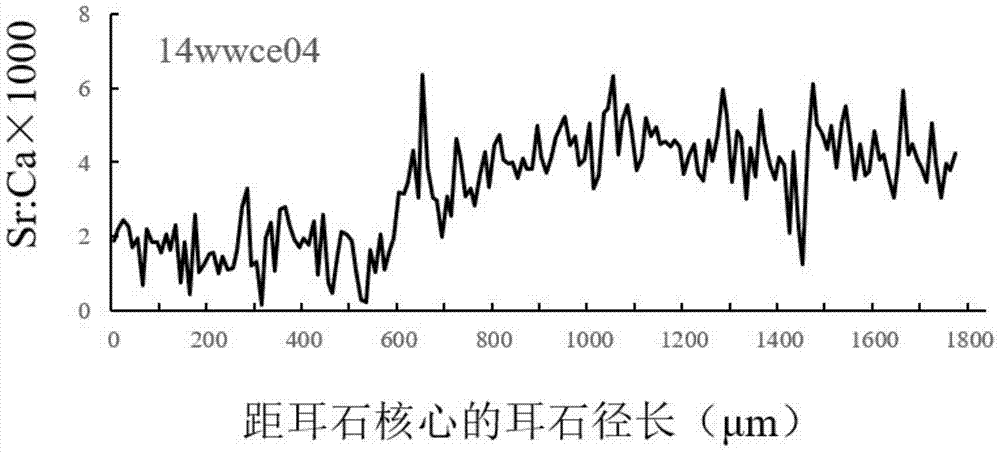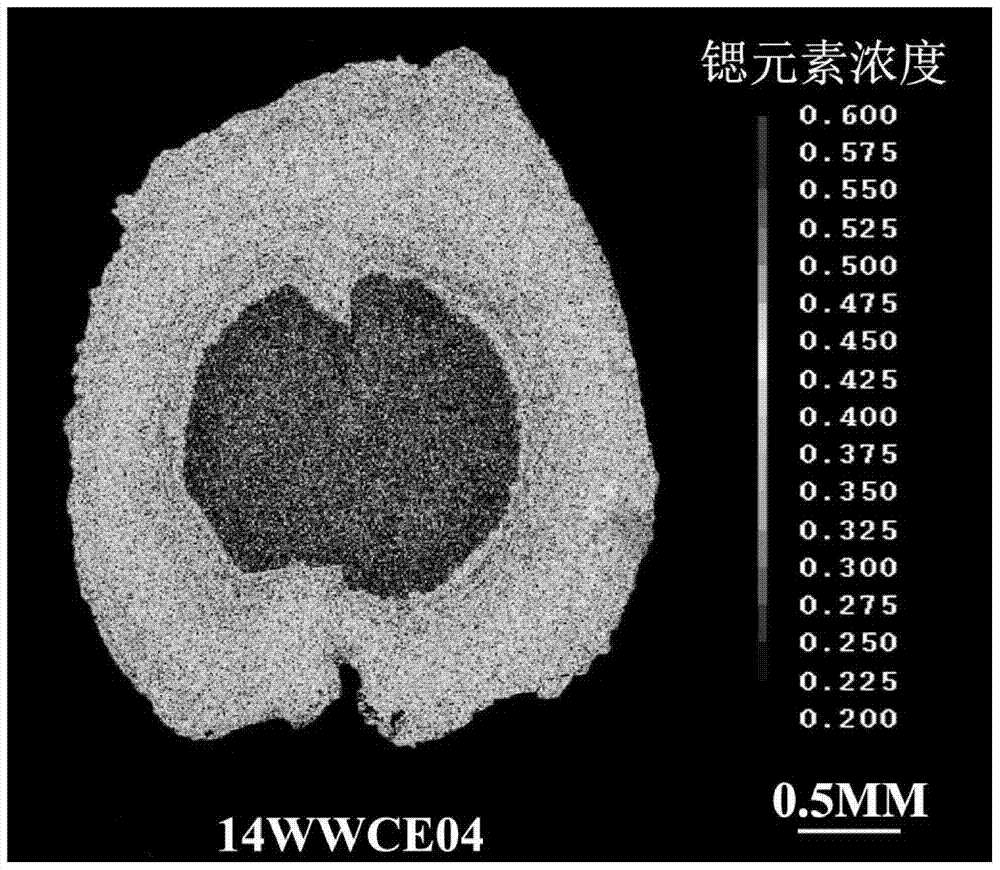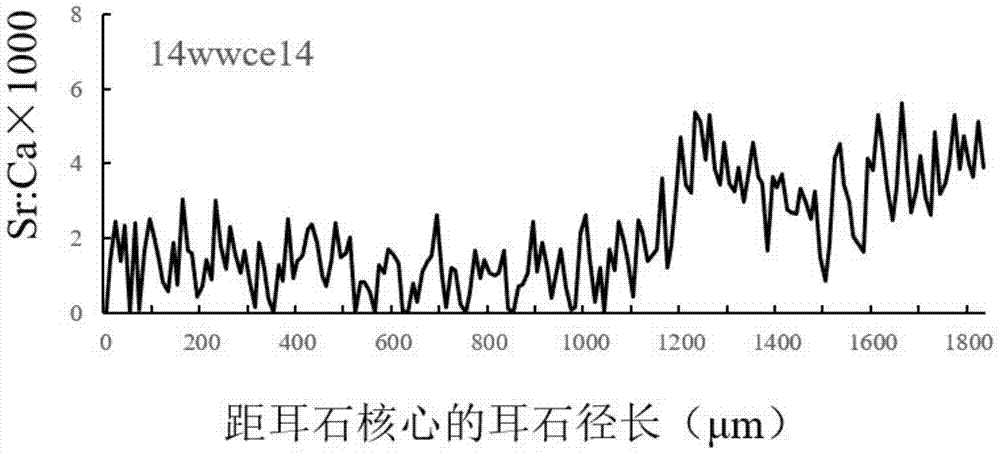A pretreatment method for microchemical analysis of otoliths
A processing method, the technology of the otolith of the common anchovy, is applied in the pretreatment field of the microchemical analysis of the otolith of the common anchovy, which can solve the problems that the microchemical analysis of the otolith of fish is not applicable, and the heat resistance of the otolith does not meet the analysis requirements, and achieves strong hardness. , good support and high transparency
- Summary
- Abstract
- Description
- Claims
- Application Information
AI Technical Summary
Problems solved by technology
Method used
Image
Examples
Embodiment 1
[0035] A method for the pretreatment of the microchemical analysis of the otolith of cuttlefish adopts the following process steps:
[0036] a. Anchovy specimens were collected from the Wuwei section of the Yangtze River in Anhui in early June 2014. After measuring the basic biological data of one of the specimens, the left otolith was removed and washed with deionized water for 3 minutes to remove mucus and envelope , and then use pure alcohol to further clean the organic matter on the surface for 2 minutes, and check whether there is any residual organic matter under a magnifying glass of 10 times, then transfer the otoliths into a 48-well cell culture plate, and dry them at room temperature for 12 hours to obtain otoliths Sample 14WWCE04;
[0037] b. Take 4 ml of AB glue (provided by Japan Konishi Co., Ltd., A glue is epoxy resin, B glue is polythiol curing agent) on a clean aluminum foil, stir for 1 minute, and heat it on an alcohol lamp After 15 seconds to make it watery...
Embodiment 2
[0048] A method for the pretreatment of the microchemical analysis of the otolith of cuttlefish adopts the following process steps:
[0049] a. Anchovy specimens were collected from the Wuwei section of the Yangtze River in Anhui in mid-June 2014. After measuring the basic biological data of one of the specimens, the left otolith was removed and washed with deionized water for 3 minutes to remove mucus and envelope , and then use pure alcohol to further clean the organic matter on the surface for 2 minutes, and check whether there is any residual organic matter under a magnifying glass of 10 times, then transfer the otoliths into a 48-well cell culture plate, and dry them at room temperature for 12 hours to obtain otoliths Sample 14WWCE14;
[0050] b. Take 4 ml of AB glue (Japan Konishi Co., Ltd.) on a clean aluminum foil and stir it for 1 minute, then heat it on an alcohol lamp for 15 seconds to make it watery, and put it on the surface with a diameter of 30 mm and a height o...
Embodiment 3
[0061] A method for the pretreatment of the microchemical analysis of the otolith of cuttlefish adopts the following process steps:
[0062] a. Anchovy specimens were collected from the Wuwei section of the Yangtze River in Anhui in late June 2014. After measuring the basic biological data of one of the specimens, the left otolith was removed and washed with deionized water for 3 minutes to remove mucus and envelope , and then use pure alcohol to further clean the organic matter on the surface for 2 minutes, and check whether there is any residual organic matter under a magnifying glass of 10 times, then transfer the otoliths into a 48-well cell culture plate, and dry them at room temperature for 12 hours to obtain otoliths Sample 14WWCE19;
[0063] b. Take 4 ml of AB glue (Japan Konishi Co., Ltd.) on a clean aluminum foil and stir it for 1 minute, then heat it on an alcohol lamp for 15 seconds to make it watery, and then put it on the surface with a diameter of 28 mm and a he...
PUM
 Login to View More
Login to View More Abstract
Description
Claims
Application Information
 Login to View More
Login to View More - R&D
- Intellectual Property
- Life Sciences
- Materials
- Tech Scout
- Unparalleled Data Quality
- Higher Quality Content
- 60% Fewer Hallucinations
Browse by: Latest US Patents, China's latest patents, Technical Efficacy Thesaurus, Application Domain, Technology Topic, Popular Technical Reports.
© 2025 PatSnap. All rights reserved.Legal|Privacy policy|Modern Slavery Act Transparency Statement|Sitemap|About US| Contact US: help@patsnap.com



